Picture this. You’ve got a fresh haircut at the hottest salon and you feel like one of those boyband members that girls worldwide drool over. You pull out your credit card to pay…and you get hit with that “CARD DECLINED” message on the terminal.
Yep, that happened to me. I went from feeling like I could own a sold-out show at MetLife Stadium in New Jersey to feeling the biggest embarrassment of my life – my credit card was compromised. I was the latest victim of credit card fraud.
That feeling came when I phoned up customer service. “What? Credit card compromised? When?”
Minutes felt like hours as I tried to piece together what happened. Some guy in Basking Ridge apparently rang up massive charges, $500 here and $420 there…
I know I wasn’t liable for the fraudulent charges, but I felt like a real schmuck.
I prided myself on being careful. How could I be the victim of fraud?
Well, there are plenty of ways. Today, we’ll go over 5 common ways people get caught out by credit card fraud. This is an article I wish I had read before I had gotten that fateful haircut!
Never miss an amazing deal again + get our bonus 250+ page eBook for FREE. Join 50,000 other Canadians who receive our weekly newsletter – learn more.
Card terminals are a hotbed for credit card fraud
If we wanted to scare you, we would say any credit card terminal could be tampered with so your credit card gets compromised.
This is commonly called “skimming”.
Credit card skimming is a common type of credit card fraud where scammers install a device (a skimmer) onto the credit card terminal. While your transaction may go through, the same info that went into the terminal will also get absorbed by the skimmer, giving those juicy numbers to those sticky-fingered thieves.
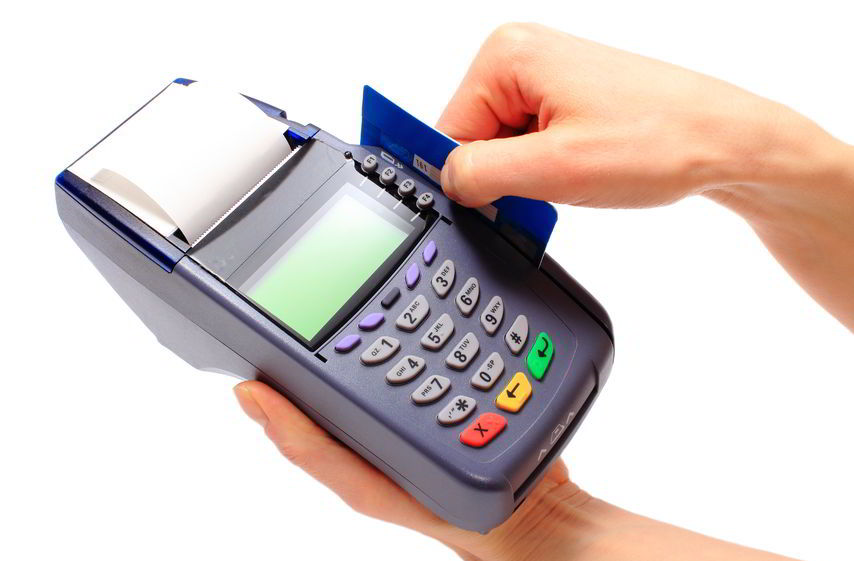
Some time in the future, the hackers will pick up the skimmer and extract the data. Some will work via Bluetooth. Now imagine what the bad guy could do with all this data. He and his criminal friends have access to tens, if not hundreds of credit cards and debit cards.
Think this is a difficult feat? Think again. An experienced crook can install a skimmer and slip out in under 5 seconds.
However, this applies more to older card readers that use a magstripe like at some gas stations.
A more recent development in credit card skimming is through Square. Square is a payment processor that allows anyone to accept payment for anything. Some can be attached right to your phone so you can accept payments with a swipe, just like an old-school credit card terminal. Hackers have been able to turn these devices into skimmers as well.
Evolution of credit card fraud – credit card shimmers
With Mastercard getting rid of the magnetic strip in the near future, this is becoming less of a threat. Chip cards might still be skimmable, but they’re also “shimmable”.
Shimmers are thin devices that are planted inside the chip terminals on credit card readers. There, they can successfully read the EMV chip on your card. Though there are more security features on EMV chips, thieves could still potentially get some data to use in credit card fraud.
That being said, it’s still more secure to use your chip instead of swiping.
How do I protect myself from hacked credit card terminals?
First, always check for signs of tampering. Feel if there is something loose or out of place. I had gotten into the habit of roughly jiggling the gas station credit card reader before they added a tap option. I still do this with ATMs.
And of course, protect your PIN! Even if you were lazy and chose 7-7-7-7, look over your shoulder, cover the numbers as you punch them in, and rub all the numbers when you’re done (some thieves used thermal cameras in the past to detect residual body heat on the numbers).
And if it’s something sketchy, either pay with cash or consider buying something else.
Protecting your phone and computer from credit card fraud
Computer hacking is a bit more common knowledge, since computers have been around longer.
But, now, hackers can actually get into your mobile phones (which are becoming more and more like mini-computers in their own right).
For computers, usually you get viruses or malware from opening “infected” emails, SMS messages, or WhatsApp messages. Or you could accidentally download some software or an app with malware in it.
Now, hackers can actually get into your cell phone by means of “software updates” that aren’t really software updates, malicious mobile apps, and even unsecured WiFi networks.
Always keep your phone’s software up-to-date
Keep an eye out for software updates, especially security patches. They are released regularly and will keep your phone and all its contents protected. You don’t want to lose money due to credit card fraud, and you especially don’t want to lose precious photos and videos either.
If your phone is out of date, you risk getting hacked. It’s as simple as that.
What was always an issue in the past was that phones would get out of date and support for older phones and older operating systems would end within 2 years. Apple has the edge on Android in this category, but Google has certainly been stepping it up by promising 4 – 5 years of security patches on its newer phones, which is a good sign of things to come.
Don’t download weird apps willy-nilly
It’s also very important to use caution when downloading mobile apps. Make sure the app comes from a trusted source. You assume more risk if you download APKs from outside the Google Play Store or App Store.
Aim for secure WiFi networks
It may be tempting to leech off someone’s WiFi, but you never know if they could be using it to perpetuate credit card fraud or do other nasty hackerish things to your phone.
If you’re at a store or restaurant, ask the staff if they have free WiFi that’s secure. They probably won’t spit in your food; the worst that’ll happen is they’ll say no. And if that’s the case, just be conservative with your data use or wait until you get home. Those cat videos can wait.
What can you do if your credit card is compromised?
More often than we think, having our credit card compromised is not our fault.
In this day and age, nearly everything is done online – from adjusting your home’s temperature remotely, to online shopping, even ordering coffee before you even get to the coffee shop. We are putting our trust into the companies who create this software to take good care of our precious personal information.
Sadly, some of these companies are not as vigilant as they should be when it comes to cybersecurity.
British Airways once experienced a breach involving 380,000 customers.
Another alarming headline: Air Canada’s mobile app was also breached, and 20,000 customers had their personal information compromised.
Cybersecurity is a huge, expensive, and complicated investment for small- and medium-sized companies. But for larger corporations that handle much more important information on a daily basis, we should be seeing less and less of these data breaches.
Credit card company responses to credit card fraud
Usually, your credit card network will detect fraudulent charges almost right away based on whether or not the transaction seems peculiar or suspicious.
If the amount is much higher than usual, or if the transaction is made in a totally different province or country is enough for them to flag it.
They will typically freeze your card to keep it from making any other charges and give you a call to let you know. So this is why it’s a good idea to give your credit card service provider a call before you go on vacation or plan a larger-than-usual purchase.
That being said, always…always…go over your credit card statement every month to be certain. If you see any suspicious charges being made onto your card, make sure to report it to your issuer right away. You can stop things before they get out of hand and work to get your money back.
Thankfully, fraudulent charges don’t affect your credit score.
Here is a list of Canadian Credit card issuers and their Customer Service lines to call if ever you think your credit card is compromised.
| Issuer | Customer Service Line |
|---|---|
| American Express | 1 (800) 869-3016 |
| BMO | 1 (877) 225-5266 |
| CIBC | 1 (800) 465-2422 |
| MBNA | 1 (888) 876-6262 |
| National Bank of Canada | 1 (888) 483-5628 |
| RBC | 1 (800) 769-2511 |
| Scotiabank | 1 (800) 472-6842 |
| TD | 1 (866) 222-3456 |
Preventing credit card fraud: 14 steps
There are 14 preventative measures that you can take to protect your information.
- Regularly check your transactions online or on your monthly statement.
- Never give out your credit card information over the phone, over the internet, or over email unless you are absolutely sure you are dealing with a reputable, safe company.
- Never write down or share your Personal Identification Number (PIN) with anyone.
- Change your PIN regularly, and make sure that the number isn’t something too obvious (phone number, address, birthdate).
- Never give out any information about your credit card. Banks will never call you to ask you for your credit card information (expiration date, PIN, security number on the back of your card, etc.), unless you call them.
- Protect your credit cards like you would protect your cash – never leave them unattended in your car or at work.
- Sign the back of a new card as soon as you get it.
- At a credit card terminal, always try inserting your card chip-end first before attempting to swipe it. This way, you reduce the risk of having your credit card “skimmed.”
- Call customer service immediately if you don’t recognize a charge on your card.
- Call customer service immediately if you suspect your card has been stolen or lost.
- Take all receipts and carbon copies home with you, such as those from ATM machines, self-service gasoline pumps and restaurants; destroy them by shredding them before throwing them away.
- Keep your eye on your credit card during transactions, and ensure that your credit card has been returned to you.
- When disposing of old receipts and statements, don’t use public waste bins.
- Be on the lookout for “phishing” email fraud – this is when hackers pretend to be legitimate companies asking you for your credit card information. Legitimate companies will never ask you for your personal information over email.
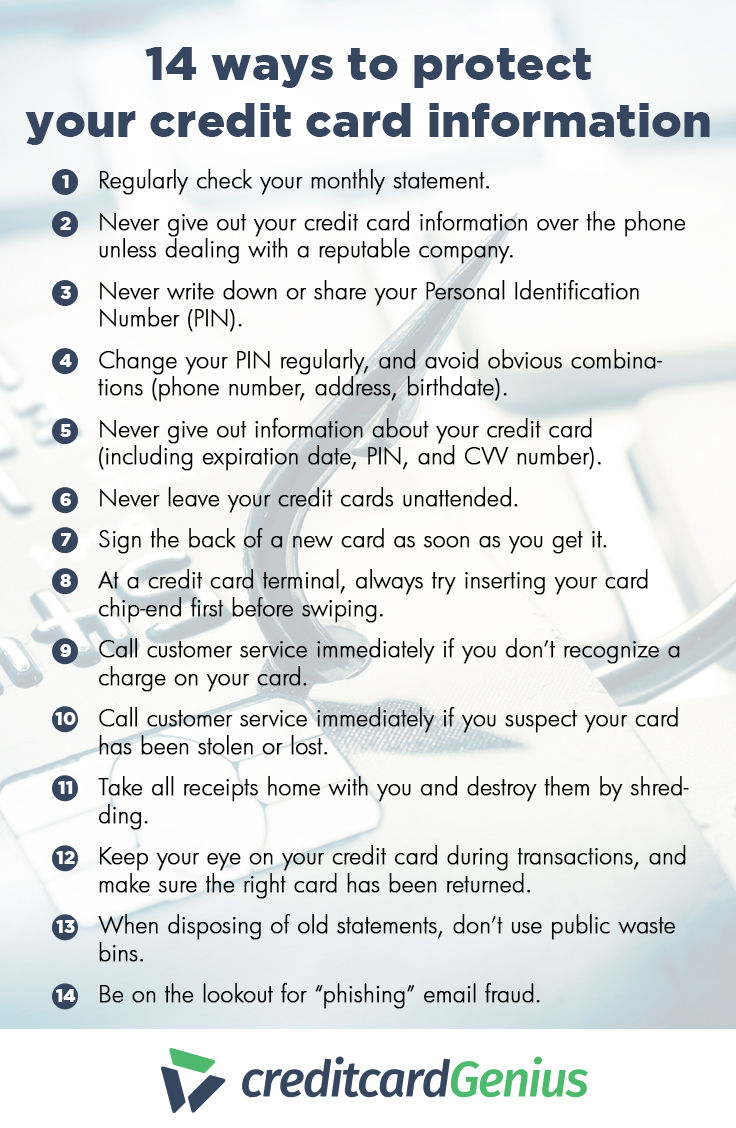
Keep calm and carry on – with caution
The bottom line is, sometimes, there is nothing you can do to protect your information.
There will always be bad guys out there looking to steal people’s money, and they will always get smarter at the same rate as our technology gets smarter.
But that doesn’t mean you shouldn’t be careful when something seems suspicious. There are things you can do in your day-to-day life to help prevent credit card fraud.
Being responsible and eagle-eyed when it comes to your finances is an absolute must.
FAQ
Are credit card skimmers still a thing?
Although less common than they were before with the introduction of EMV chips, tap, and mobile pay, credit card skimmers still exist and we recommend exercising caution when swiping your magnetic stripe. Your credit card can also be skimmed on things like Square and mobile RFID readers.
How do I protect myself from credit card fraud online?
Staying vigilant online is more important than ever. If you consider yourself a digital native, you may feel invulnerable, but there are new scams appearing every day. So always be careful with any links, offers, or anything that sounds too good to be true. Keep your computer and phone up-to-date at all times and avoid unsecured internet connections.
Help! My credit card is compromised! What should I do?
The first thing you need to do is call your bank and explain the situation. They will be able to help you lock your card and attempt to get your money back. From there, you may be issued a new card and your life will go back to normal (you’ll just be more cautious in the future, right?).
creditcardGenius is the only tool that compares 126+ features of 231 Canadian credit cards using math-based ratings and rankings that respond to your needs, instantly. Take our quiz and see which of Canada's 231 cards is for you.




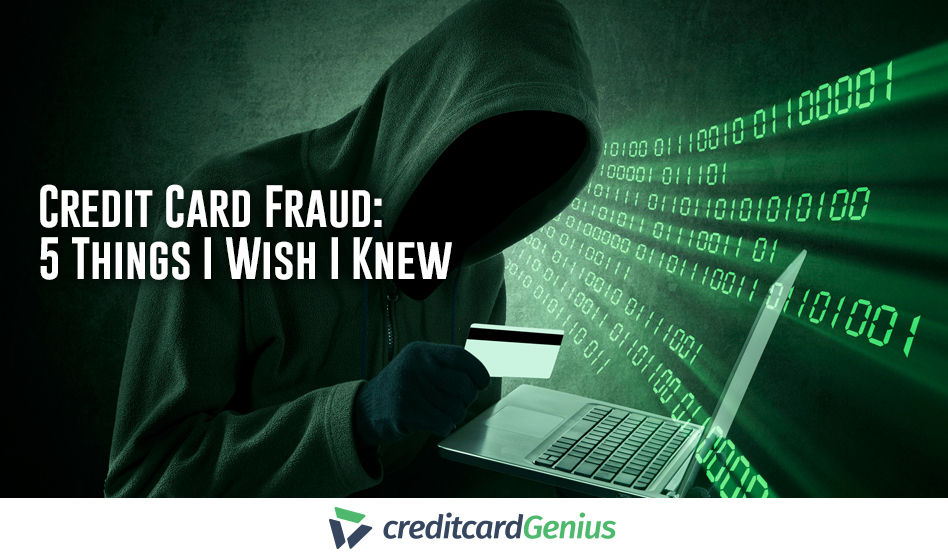

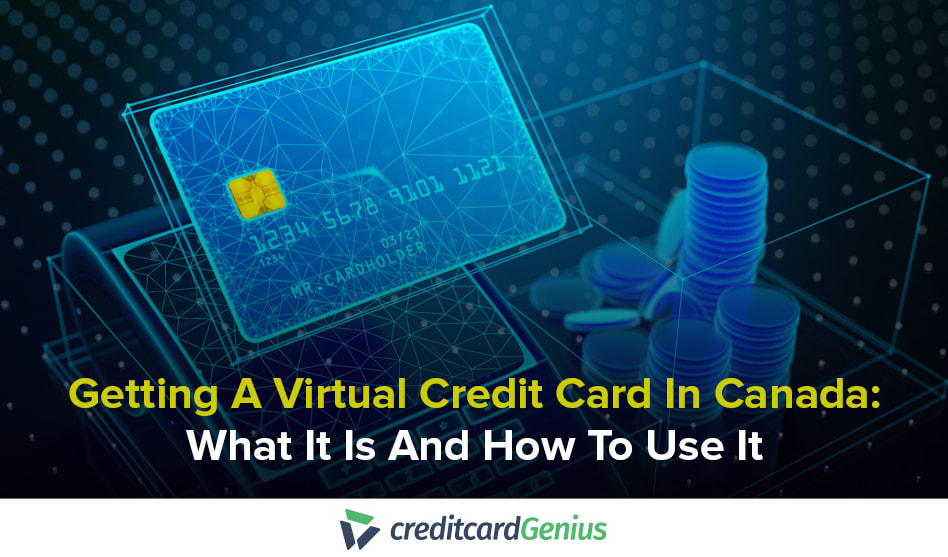


 GC:
GC: 
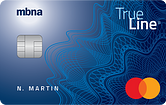
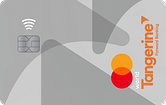
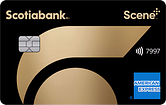
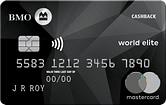
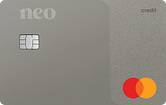
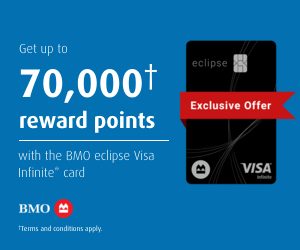
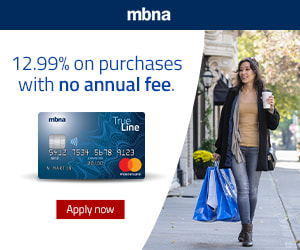
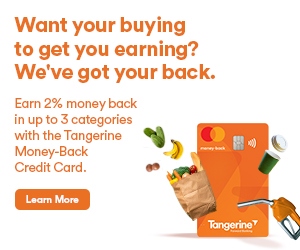





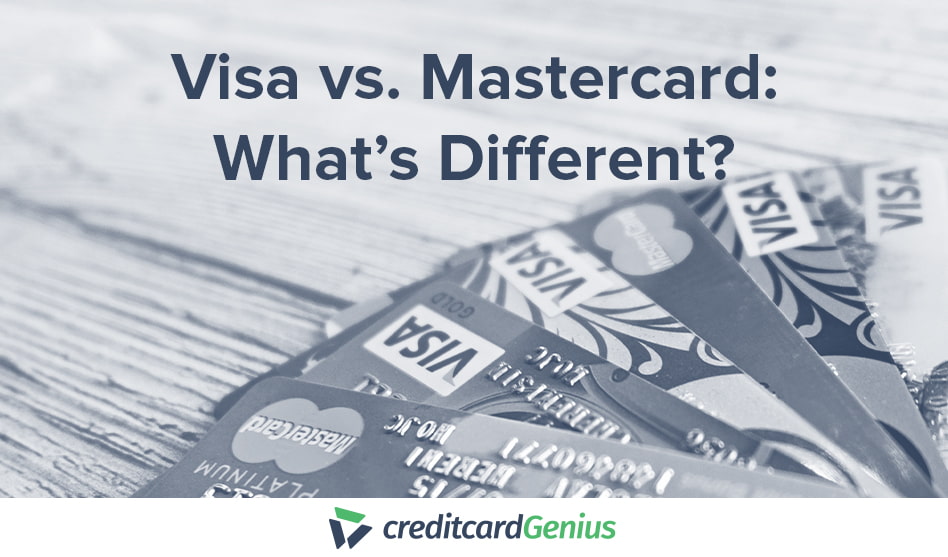
.png)




















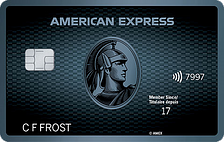
 $100 GeniusCash + Earn up to 15,000 Welcome Bonus Membership Rewards® Points.*
$100 GeniusCash + Earn up to 15,000 Welcome Bonus Membership Rewards® Points.*
Comments
Leave a comment
Required fields are marked with *. Your email address will not be published.